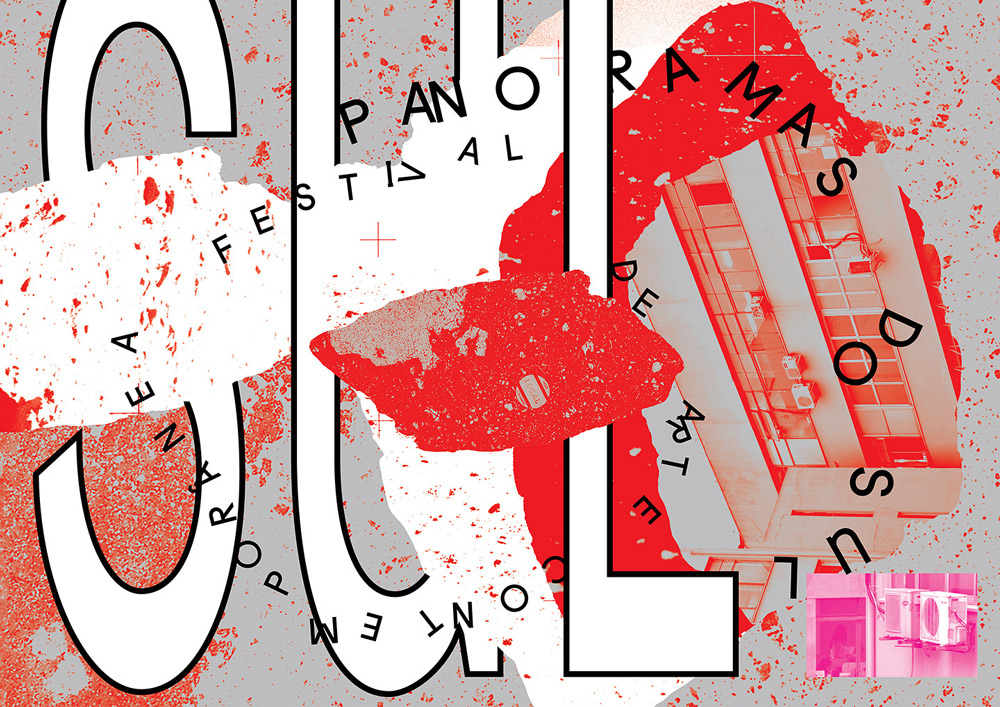- About
- Concept
- Program
- Awards
- Publications
- Photos and videos
- Press

by Vitor Cesar & Felipe Kaizer
South and North
The South of the world is in focus. The word “Sul” (South) is emphasized over the other elements that make up the exhibition’s title. The South surpasses in importance everything else. “South” is one of the Festival’s names, alluding to the debates on decolonization and post-colonialism. That is how the curatorship’s overarching trend has been expressed in recent years. The difference this time is the break with the hierarchization of names, running counter to the logic stemming from the North.
The South is also a subject in the North. Once again, the North takes an interest in the South. Current reasons lie in the limitations of affluent society, which is quickly becoming unsustainable. The South seeks different ways of life, new fields to occupy. In its own terms, the North speaks of a “state of mind” still detached from the body. But in the South the problem is not approached in the same way.
Anthropocene
We live in a geological age which is also artificially produced. From now on, human beings are a factor of the planet’s climate. The Anthropocene implies, among other things, overcoming the difference between natural and artificial. Human beings result from climatic conditions and climatic conditions result from human action. Plastic is a component of new volcanic rock. Plastiglomerates accumulate in seas and shores. Soon they will be found in streets and apartments.
Buildings over sidewalks over stones, in layers, give rise to great confusion. The urban is, from now on, irremediably at the core of our concerns. It is a point of no return. Everything revolves around its quantities, its scales, its densities. Cities expand, multiply, obstruct each other.
Visual identities
Every visual identity identifies and communicates. Every identity seeks repetition and coherence. To this end, control is kept over its manifestations. Such control is acquired through systems and programs. Thus reads the corporate identity textbook, internationally consolidated post-1950.
The Sesc_Videobrasil Festival project seeks to steer clear of such imperatives. It is a contemporary art exhibition with no problems of continuity. There remains, however, the demand for distinction, in whose name one runs the risk of strangeness in face of the standard project for art.
Also considered are the conditions of new means of communication. The digital environment promotes the dissociation between visual form and information structure. Nowadays, all textual information borrows the media vehicles in which it circulates. The pressure for distinction then falls entirely on the image. That has consequences for all visual communicators who have become accustomed to the predictable interaction between text and image.
Ways of doing
The visual language of the 20th Contemporary Art Festival Sesc_Videobrasil is a response to the series of questions raised. Or rather, to the extent that the questions remain unanswered, graphic design configures itself as a question. What one sees is a way of questioning.
This process starts out from curatorial reflections. Decisions on concepts, but also on artists. A particular universe is identified in the chosen production. Then, a possible “vocabulary” is defined for that universe. However, the antithesis of systematization is attempted in this process: catalog, signage, advertisements are drawn case by case. Such an attitude does not prevent the project as a whole from eventually finding an individual form, considering how each manifestation of language inherits traits from the former and incorporates new elements.



